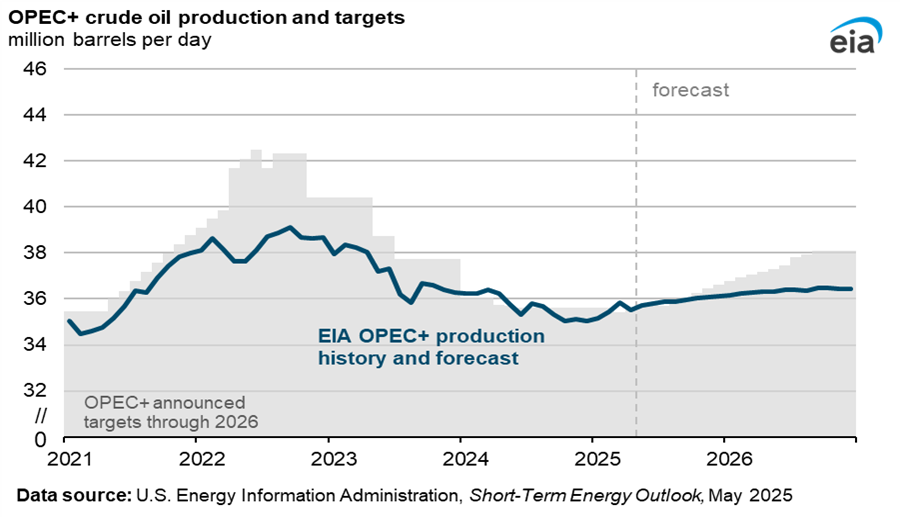Petroleum products
U.S. refinery margins
We expect to see lower crack spreads, broadly a measure of refining profitability, in December and the first quarter of 2026 (1Q26) compared with our previous forecast. In November, crack spreads increased in response to constrained global refinery production. However, refinery margins at the end of November and in early December decreased as some global refinery maintenance comes to an end. In our December STEO, we estimate U.S. average 3-2-1 crack spreads in the month of December will be 10 cents per gallon lower than we estimated in our November STEO. We do not expect much of a change to the rest of our forecast as we still expect global petroleum product market tightness and lower crude oil prices to continue to contribute to higher refinery margins in 2026.
The 3-2-1 crack spread is calculated by subtracting the price of a gallon of crude oil from two thirds the price of a gallon of gasoline and one third the price of a gallon of diesel. It is also an indicator of the relative value of refining crude oil, particularly for U.S. refiners that tend to produce higher yields of gasoline relative to diesel-focused refineries like many in Europe .
High November crack spreads reflected tight global market conditions, partly brought on by the United States’ and European Union’s October 2025 implementation of new sanctions on petroleum from Russia. They also reflected reduced refinery production from European and Middle Eastern refineries during the fall maintenance season. Spreads decreased at the end of November as maintenance comes to an end.
Despite lower gasoline and diesel prices in late November and early December, we still estimate crack spreads will be more than 10 cents per gallon higher, on average, in 2026 than they were in 2025. Attacks on Russian refineries, shifting crude oil trade flows, and sanctions on Russia’s petroleum sector present an ongoing source of upward price pressure for global petroleum product markets. We assume global refiners using crude oil from Russia will find replacement volumes in an increasingly oversupplied global crude market. Nonetheless, the potential for a more prolonged and permanent impact on global refinery margins resulting from these risks is a source of uncertainty and upside price risk for our forecast.

